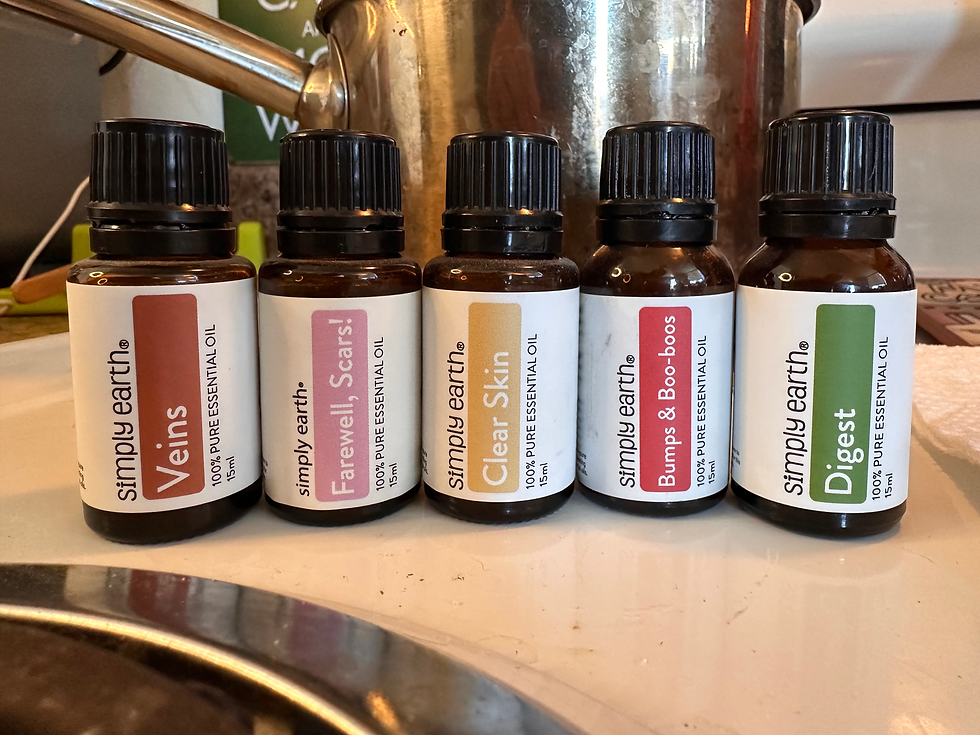What are Essential Oils
- Shona Ferguson

- Mar 14
- 3 min read
Updated: Apr 1

Essential oils are made through two main methods: steam distilling and cold pressing.
Steam distilling is done by cooking plant material. This heat causes both water and oil from the plant to rise as steam. Steam is then collected, cooled, and the oil and water are separated. The oil is the plant's essential oil, the water collected is called hydrosol which also has therapeutic benefits.
Cold pressing (sometimes called "expression") is done by squishing the oil out of the plant. This is mostly done with fruit peels. If you take an orange peel and squish it, some oil will come out. Voila-you have orange essential oil.
It takes about 150 pounds of Lavender flower petals to make 1 pound of Lavender Essential Oil. With this concentration in mind, it is important that we treat essential oils with respect.
Plant part:
The part of the plant the oil was taken from can determine some of the oil's properties. For example, essential oils taken from a clove bud rather than the clove stem or leaf is generally less irritating and has a better aroma.
Plant Description:
I use google to get plant information if I am not sure about the properties and parts of the plant used to derive the oil.
Aromas:
These are generally words like: sweet, citrus, woody, medicinal, etc. to describe aromas. "Notes" of the oils are helpful when creating blends. Each essential oil will be described as having a top, middle and base note. A top note essential oil will evaporate quickly. A middle note of an essential oil tends to have more body to it and has a balancing effect when making blends. A Base note evaporates more slowly to create a long lasting fragrance.
Consistency:
There are a variety of consistencies, from thick to thin. this is why some can take longer to drop out of the bottle.
Color:
If you are making a cream it can be helpful to know if an essential oil has a color. for example, German Chamomile has a slightly green tint to it so if you use it for a cream it could make the cream appear light green.
Cautions:
Every essential oil is different. Although they are organic and natural some oils are suitable for Children, pregnant women, people on certain medications, and pets. Some oils should be used at a lower dilution rate. It is always best to check with physician and also google can be a wonderful source of information as well. Be sure when searching for this information you use the 'botanical name' in the search.
Remember when I said essential oils are very concentrated? Essential oils cause skin irritations for they are not diluted before putting them on the skin. This can look like red bumps or cause a burning sensation.
**Essential oils should not be used directly on the skin! They also should never be ingested! They should always be diluted with a carrier oil. for example if you wanted some lemon flavored water just add lemon juice which is far lass concentrated than lemon essential oil.
Mission for this blog: Pick an essential oil and look up how it was created and comment below the oil you chose and how it was extracted.




Comments